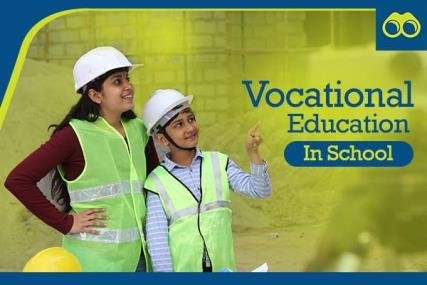Vocational education is an increasingly popular option for individuals seeking a more practical, hands-on approach to learning. Unlike traditional academic paths focusing on theoretical knowledge, vocational education equips students with specific skills needed for particular trades or professions. This article explores what vocational education entails, its importance, and how it differs from conventional educational systems. In each section, we will dive deeper into how vocational education can transform a student’s career trajectory and provide real-world benefits.
Read More: Techgues com | Apps, Technology, Social Media Followers
What is Vocational Education?
Vocational education, often called technical or career education, provides students with the training and skills required for a particular job or industry. It typically involves hands-on learning, allowing students to apply theoretical knowledge to real-world scenarios. These programs prepare individuals for entry into healthcare, manufacturing, IT, hospitality, and construction.
The Historical Background of Vocational Education
Vocational education has its roots in ancient times when apprenticeships were the primary means of learning a trade. The need for skilled workers grew during the Industrial Revolution, and vocational training became more formalized. In the early 20th century, vocational schools were established to meet the needs of a rapidly industrializing world.
How Vocational Education Differs from Traditional Education
Traditional academic education typically focuses on broad, theoretical knowledge, covering subjects like mathematics, science, literature, and history. Vocational education, on the other hand, is more specialized and job-focused. While traditional education is ideal for those pursuing careers in law, medicine, or research, vocational education offers an alternative for students who prefer a more hands-on learning experience.
Types of Vocational Education Programs
Vocational education programs come in many forms, catering to various industries. Common types of vocational training include programs in areas such as:
- Healthcare (e.g., nursing, medical assistance)
- Information Technology (e.g., coding, network administration)
- Trades (e.g., carpentry, welding, plumbing)
- Hospitality and Tourism (e.g., culinary arts, hotel management)
- Automotive (e.g., mechanics, electrical systems)
These programs can be offered at various levels, including high school vocational tracks, postsecondary institutions, community colleges, and technical schools. The versatility of vocational education programs allows students to choose a path that aligns with their career interests and goals.
The Benefits of Vocational Education
Vocational education provides several advantages for students and the economy. First, it offers students a direct route to employment, often leading to higher job placement rates than traditional college graduates. Because vocational programs are designed with the job market in mind, students gain relevant skills in high demand.
The Growing Demand for Vocational Skills in the Job Market
As industries evolve and technology advances, the demand for skilled workers rises. Vocational educatio’n is crucial in addressing skill gaps in healthcare, information technology, and skilled trades. Employers are looking for workers who are knowledgeable and have practical experience in their fields.
Vocational Educatio’n and Career Advancement
Vocational educatio’n is beneficial not only for individuals entering the workforce for the first time but also for those looking to advance or shift their careers. Many adults return to vocational schools to gain new skills or credentials that allow them to move up in their current jobs or transition to a different industry.
Challenges Facing Vocational Educatio’n
While vocational educatio’n offers numerous benefits, it also faces challenges. One of the main issues is the perception that vocational educatio’n is less prestigious than traditional academic paths. Many parents and students still believe that attending a four-year university is the only way to achieve career success.
The Role of Governments and Industries in Supporting Vocational Educatio’n
Governments and industries play a crucial role in promoting vocational educatio’n. Many governments recognize the need for a more skilled workforce and invest in vocational programs through grants, partnerships with industries, and tax incentives for companies that provide apprenticeships.
The Future of Vocational Educatio’n
The future of vocational educatio’n looks promising as more people recognize the value of skill-based learning. With the rise of automation and the shifting nature of work, vocational programs will continue to adapt to meet the needs of new and evolving industries. Additionally, increasing technology integration in vocational educatio’n—such as virtual reality training for complex trades—will provide students with even more opportunities for hands-on learning.
Conclusion:
Vocational educatio’n offers a practical, hands-on approach to learning that equips students with the skills necessary for immediate employment. As industries evolve, vocational educatio’n will remain an essential pathway for individuals seeking to enter or advance in the workforce. The growing demand for skilled labor and the adaptability of vocational educatio’n programs ensure that this educatio’n will remain vital in preparing future generations for success.





